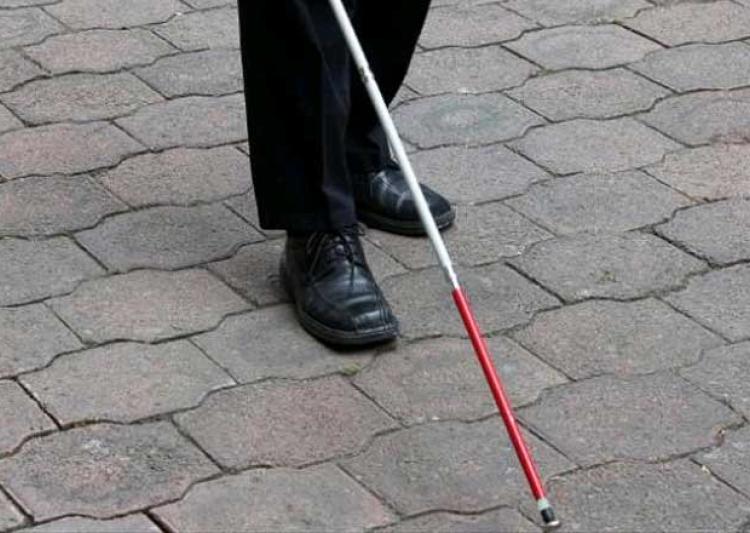
A few days ago, I happened to visit an ATM to withdraw some cash. The ATM was located in a busy marketplace and in a narrow space between two shops. The machine had to be reached by climbing a short flight of steps. At the glass fronted entrance there was a notice which referred to a Reserve Bank circular advising banks to install ATMs in locations which the mobility challenged people could access unless there were infrastructural limitations which prevented this. The bank notice was to inform that this particular ATM was not accessible to the disabled because of these said limitations. I realised that I had seen similar notices in other ATMs in this busy market and realised also that that there were several surfaces at ground level where the ATMs could have been installed and made disabled friendly. But possibly those locations would be a tad more expensive and also require a bit more space to accommodate wheelchairs. By locating the machines in a way that they could only be accessed through a flight of steps, the bank was saving some cash for sure but also denying access to an essential service to those with disabilities.
I am also reminded of my experience in a small organization that I worked for several years ago. It employed may be about 30 or so people and one of the two or three toilets was a wheelchair accessible disabled friendly toilet. There were no persons with disabilities employed during my stint there and I often wondered about the utility of there facility. One day when I asked, I was told this “ it does not matter if today we have such an employee or not. One day we may employ such a person with disabilities or interview some one for a position”. And when they come in to the office for an interview , as an employee or even as a visitor, we want that person to not feel awkward. So our office entrance has a ramp and our corridors are wide and we have a toilet available which they can use if they need to. This was a perspective that I rarely get to see.
Disability Rights in India sadly largely remain on paper. The Ministry of Social Justice and Empowerment looks after the Rights and Welfare of the Disabled and parliament enacted the The Rights of Persons with Disabilities (RPwD) Act in 2016. But that is about it. In the absence of any watchdogs and civil society activism, the law is one of the many that India has enacted over the years.
There are numerous non governmental organisations working in the disability sector. Almost always they work in the welfare area – providing hearing aids, wheel chairs and teaching people braille or sign language. While this is helpful as any act of charity is, the acts will only go so far.
There is a story about the well known painter Satish Gujral that once shaped my paradigm. Satish was not born deaf. He lost his hearing when he was 8 following an accident and back in those days when he was a child, there were no treatment options. So he grew up with deafness and evolved as a painter Later in life after he fell in love and got married, his wife Kiran was his de facto hearing window to the world. They settled in to a comfortable rhythm. Much later in his life, he had the opportunity to have a cochlear implant and have his hearing restored. For the first time in decades, he could hear for himself. But Satish used nearly all his life to Kiran filtering all the cacophony and noise from the world, the gift of hearing did nor prove to be a blessing. In his own words “ I lost my hearing at the age of eight. When I was 80, I got the implant. Sound came back but it was not familiar to me. I got the implant removed! Every world has its own attraction. Had I got the implant after two-three years of my deafness, it would’ve been fine. But after so many years, I could not recognise another world..”
I once had the opportunity to work for an organisation that distributed hearing aids to those whose hearing was impaired and it was around this time that I heard Satish Gijral’s story and realised that disabled people need more than a piece of machinery. They need their rights. While distributing wheel chairs to those who remain confined to their homes is a good thing it is of limited utility if there are no shops one can visit, to ATMs to withdraw cash from, no offices they can mark attendance in and earn a living.. The late Javed Abidi created the National Centre for Promotion of Employment for Disabled People (NCPEDP) with aid and assistance from the Rajiv Gandhi Foundation. With a rousing slogan “ Nothing about us , without us” , they effectively initiated the disability rights movement and transformed people with disabilities from passive recipients of charity into an empowered class of people conscious and demanding of their rights. We need more of such an approach if the empowerment of the disabled has to move beyond the semantics of calling them “divyang” instead of “viklang”.
Dr Shantanu Dutta , a former Air Force doctor is now serving in the NGO sector for the last few decades.
 RSS Feed
RSS Feed















 August 4th, 2021
August 4th, 2021  Awake Goy
Awake Goy  Posted in
Posted in  Tags:
Tags: 













